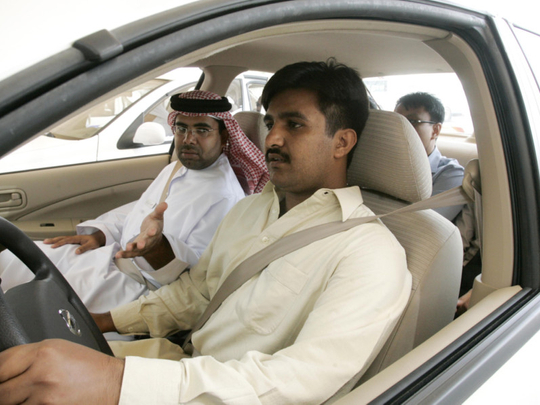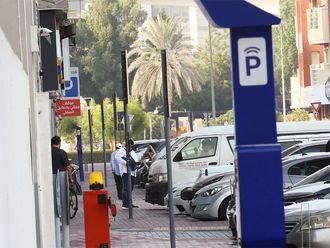
Dubai: Fear of failure and nervousness are the main causes of drivers not passing the road test, a senior licensing official at the Roads and Transport Authority (RTA) said.
Shedding light on the most common mistakes people commit during the driving test, Mohammad Abdul Karim Namat, Director, Drivers Licensing at RTA, told Gulf News that the most important thing to avoid while appearing for test is the fear of failure or nervousness.
“Confidence and control is key while driving. If a person is not confident or if he is nervous he won’t be able to concentrate properly, which will lead to lack of control. On the contrary, if you are not nervous and concentrating on the road properly, you will remember to follow the steps such as looking in the mirror while changing lanes and things like keeping a safe distance, if not the person will fail the test,” said Namat.
In order to ensure drivers are confident while driving, he said RTA is training examiners on human psychology and teaching them ways to help people calm down before road tests.
“Behaviour of the driver on road is crucial. The examiner will see whether the driver is safe for other road users or whether he is a threat to their safety,” he added.
However, apart from psychological and behavioural aspects there are major aspects of driving that a driver has to follow to obtain a licence.
There are five major criteria and if a candidate fails to fulfil even one of those, then he is stopped from driving immediately. One of these five is “failure to stop at red light, stop sign or stop line”.
“The most important thing to look for on the road is not how you drive but how you stop, that matters the most. If you fail to stop where you are required then you are gone,” said Namat. Surprisingly, failure to stop at signals is among the most common mistakes.
“This is common among experienced drivers, those who already have a licence from other countries. What they do is they see the road open and they go, because they carry their habits from their prior experience and it is difficult to change old habits,” he explained.
The other major mistakes are not adhering to traffic signs like entering a no-entry zone or yellow box, lack of vehicle control and failure to ensure the road, lane or roundabout is clear before proceeding.
Apart from control and confidence of the driver, examiners generally look for adherence of rules and there are 16 things among these minor rules that need to be taken care of.
If a candidate takes care of at least 12 of the 16 minor criteria then he will succeed. These are pre-drive checks, mirrors and observation, signals, lane change, overtaking, approach, stop position, judgement, left turn, movement on roundabout and U-turn, right turn, progress and speed, position on road gear use, safety margin, parking in and out.
“Drivers learn these rules during theory classes and road training, but it is important to implement these rules or adhere to them. Young drivers, who are driving for the first time, learn better and adhere to rules better, that’s why they have a better pass rate,” he said.
To pass, the driver has to clear at least 12 of these 16 steps apart from five major points that need to be adhered to.
“If a person drives well throughout his test but commits one major mistake at the end of the test then he will fail,” he stated.
In order to ensure that the candidates don’t appear for the test committing the same mistakes repeatedly, RTA is linking its system with that of the driving schools, which will send trainers alerts on the mistakes a driver has committed.
“We are doing this to ensure that the drivers are getting the right training and that they are not going back for tests without rectifying the mistakes they committed last time. So when the candidate is going back for more training after failing once, the instructors will know the mistakes the person has made and what are the things to focus on,” said Namat.
More than 1,800 candidates appear for driving tests daily, with only 35 per cent coming out with a licence in hand.











